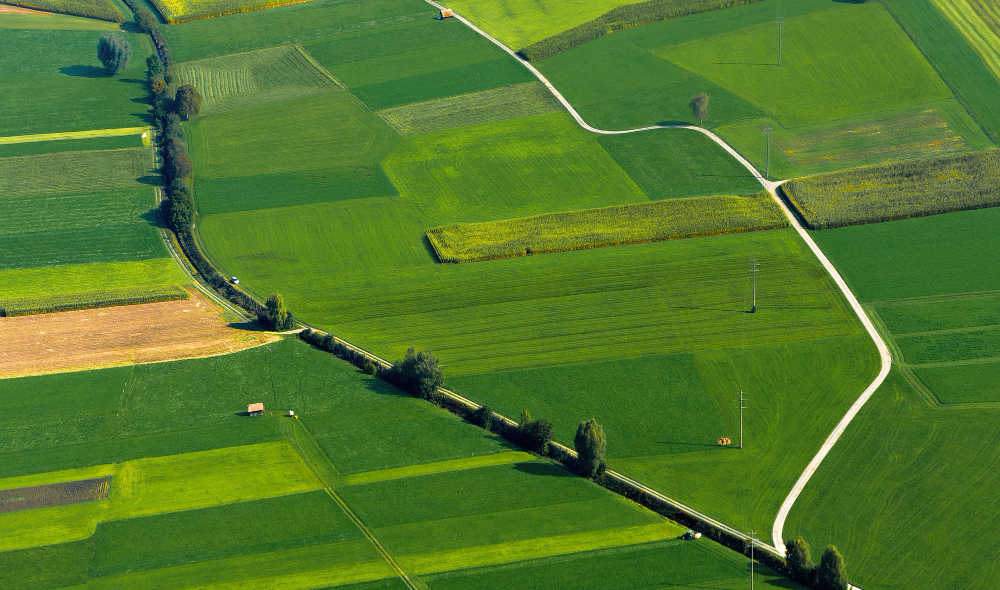In recent years, the United Kingdom has witnessed a transformative shift in its agricultural sector, driven by the integration of advanced technologies collectively known as Agricultural Technology, or AgTech. From precision farming to satellite crop monitoring, these innovations are reshaping how farmers manage their land, optimise yields, and address sustainability challenges. This evolution is not merely a trend but a necessity, as farmers face challenges such as labor shortages, environmental concerns, and the need to increase productivity sustainably. Let’s explore the current state of AgriTech in the UK, prevailing trends, the challenges hindering its widespread adoption, and envision the future of British agriculture.
UK Agriculture Embraces AgTech Innovations
In the United Kingdom, technologies such as crop monitoring software, IoT-enabled devices, and AI-driven analytics are increasingly being adopted to enhance productivity and sustainability.
One of the most significant advancements is the use of remote agriculture monitoring systems, which allow farmers to track soil conditions, crop health, and weather patterns in near real time. For instance, crop health analysis for farmers has become a game-changer, enabling early detection of diseases, nutrient deficiencies, and pest infestations. This reduces crop losses and minimises the need for chemical inputs, aligning with the UK’s commitment to sustainable agricultural practices.
Another notable advancement is the development of autonomous machinery. For instance, the ‘Robocrop’ — an improved raspberry-picking robot — has been engineered to selectively harvest ripe raspberries with precision, operating at a speed comparable to human pickers. This innovation addresses labor shortages and enhances efficiency in the harvesting process.
Additionally, the integration of Internet of Things (IoT) devices has revolutionised crop health monitoring. Sensors deployed across fields collect near real-time data on soil moisture, nutrient levels, and plant health, enabling farm owners to make informed agri decisions and promptly address issues, thereby improving crop yields and quality. Let’s study the essential technologies driving the agricultural sector in the UK.
Exploring the Latest Trends in UK Agri-Tech
Several key trends are shaping the Agri Technology in the United Kingdom:
Precision Farming. This approach leverages data from agriculture monitoring systems to optimise inputs such as water, pesticides, and fertilisers. GPS-guided machinery and drones are increasingly used to map fields and apply resources with pinpoint accuracy, reducing waste and improving yields.
Artificial Intelligence and Machine Learning. AI-driven tools are being employed to analyse vast amounts of agricultural data, facilitating predictive analytics for crop yields, pest infestations, and disease outbreaks. This proactive approach allows farmers to implement preventive measures, reducing losses and optimising resource allocation.
Vertical Farming. This method uses controlled environments and farming tracking systems to grow crops year-round, reducing reliance on traditional farmland and cutting transportation costs. It conserves space and resources, reduces transportation emissions, and ensures a consistent supply of fresh produce. Retailers like Tesco have initiated trials to support vertical farming, aiming to enhance sustainability in their supply chains.
Gene Editing. The United Kingdom government is advancing legislation to implement the Genetic Technology (Precision Breeding) Act 2023, promoting the development of crops resistant to pests and climate change. This initiative aims to boost the UK’s bioeconomy and attract investment in agricultural innovation.
Robotics and Automation. Beyond ‘Robocrop’, the deployment of robotic technologies is expanding. Innovations like the robot dog ‘Ellie’, capable of analysing soil health and navigating challenging terrains, exemplify the integration of robotics in agriculture. Such technologies assist in tasks ranging from soil sampling to livestock monitoring, enhancing efficiency and reducing labor dependency.
What obstacles might arise when implementing agricultural technology in the United Kingdom? Let’s take a closer look.
Overcoming Challenges in AgriTech Implementation
Despite the promising advancements, several challenges impede the widespread adoption of smart farming in the United Kingdom:
High Initial Investment. The cost of implementing advanced technologies can be prohibitive, especially for small to medium-sized farms. Expenses associated with purchasing and integrating new equipment, such as GPS-enabled tractors, drones, and moisture sensors, pose significant financial barriers.
Learning Curve and Technical Expertise. The complexity of AgTech systems necessitates a certain level of technical proficiency. Farmers may require training to effectively utilise data analytics, precision agriculture tools, farm monitoring systems, and other technological innovations. This learning curve can deter adoption and limit the potential benefits of these technologies.
Infrastructure Limitations. Reliable internet connectivity is crucial for technologies like IoT devices and near real-time data monitoring. Rural areas in the UK often face connectivity issues, hindering the effective implementation of remote crop monitoring solutions.
Labor Shortages. Post-Brexit labor shortages have intensified challenges in the agricultural sector. The National Farmers Union reported that only 1% of the 60,000 seasonal workers picking fruit and vegetables last year were British, with the remaining 99% coming from Eastern Europe. This shortfall has significant implications for labor-intensive farming operations.
Let’s examine the potential of agricultural technologies in the United Kingdom.
How AgTech is Redefining United Kingdom’s Farming for Tomorrow
The future of AgriTech in the United Kingdom is set for significant expansion, fueled by government backing and innovative advancements in the industry.
Government Support. The UK government has renewed the seasonal farm worker scheme for an additional five years to tackle labor shortages and bolster the agricultural workforce. Furthermore, a £110 million investment in agricultural technology has been announced, highlighting a strong commitment to fostering innovation in farming.
Research and Innovation. Institutions such as the John Innes Centre have achieved significant advancements in soil science, uncovering ways to improve nutrient absorption in crops. This research paves the way for eco-friendly farming practices that lessen dependence on synthetic fertilisers, thereby promoting sustainable agriculture.
Market Expansion. The UK Agriculture IoT sector is expected to experience considerable growth, driven by the increasing adoption of connected devices and data-centric farming methods. This trend reflects a shift towards more sustainable and efficient agricultural operations.
Emphasis on Sustainability. With a heightened focus on sustainability in agriculture, initiatives like low-carbon fertiliser trials and commitments to responsible sourcing are helping to reduce the environmental impact of farming. Collaboration between growers and retailers is essential to implement these practices, enabling the United Kingdom to meet its net-zero goals.








